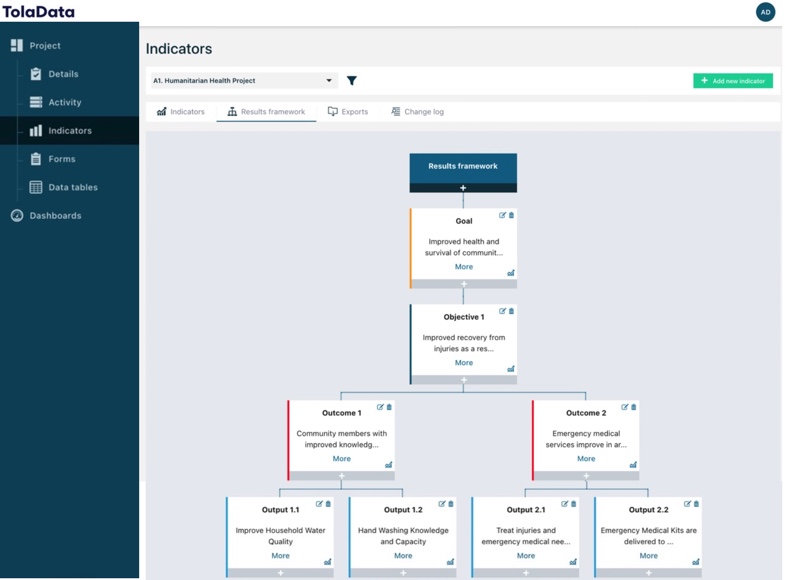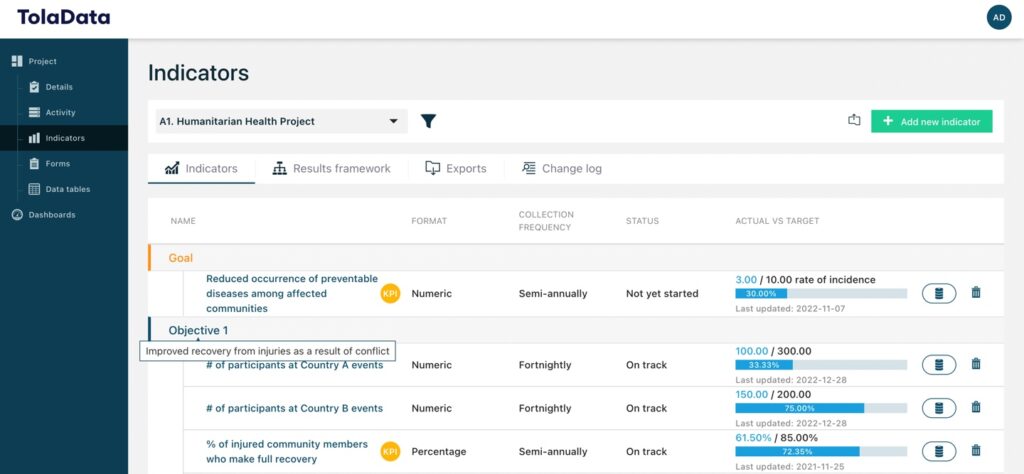A results framework, sometimes also known as a logic model, is a visual representation of the flow of changes that you intend to deliver through your project in order to achieve your overall goal. It is usually displayed in a box-and-arrow tree diagram with different levels, each level representing a distinct change or result achieved through your project intervention.

The results specified typically comprise of intermediate ‘outcomes’ and ‘outputs’ that lead to long-term objectives, often referred to as ‘impacts’.
Some of the benefits of using a results framework:
- It helps to focus on specific outcomes.
- It highlights the key linkages in the theory of change that underpin the intervention.
- It helps establish an evidence-based approach to monitoring and evaluation.
- It helps measure progress toward strategic objectives.
- It helps achieve strategic objectives.
In TolaData, the results framework serves two purposes. Firstly, it communicates to your team the different goals, objectives, outcomes and outputs of your project. Secondly, it provides a structure to organise your indicator plan, making it easier to navigate through your indicator list. The image below shows the result framework levels, the coloured headings, under which the indicators are ordered. By hovering over the name of the results framework level you will see a more detailed description of that particular result.




